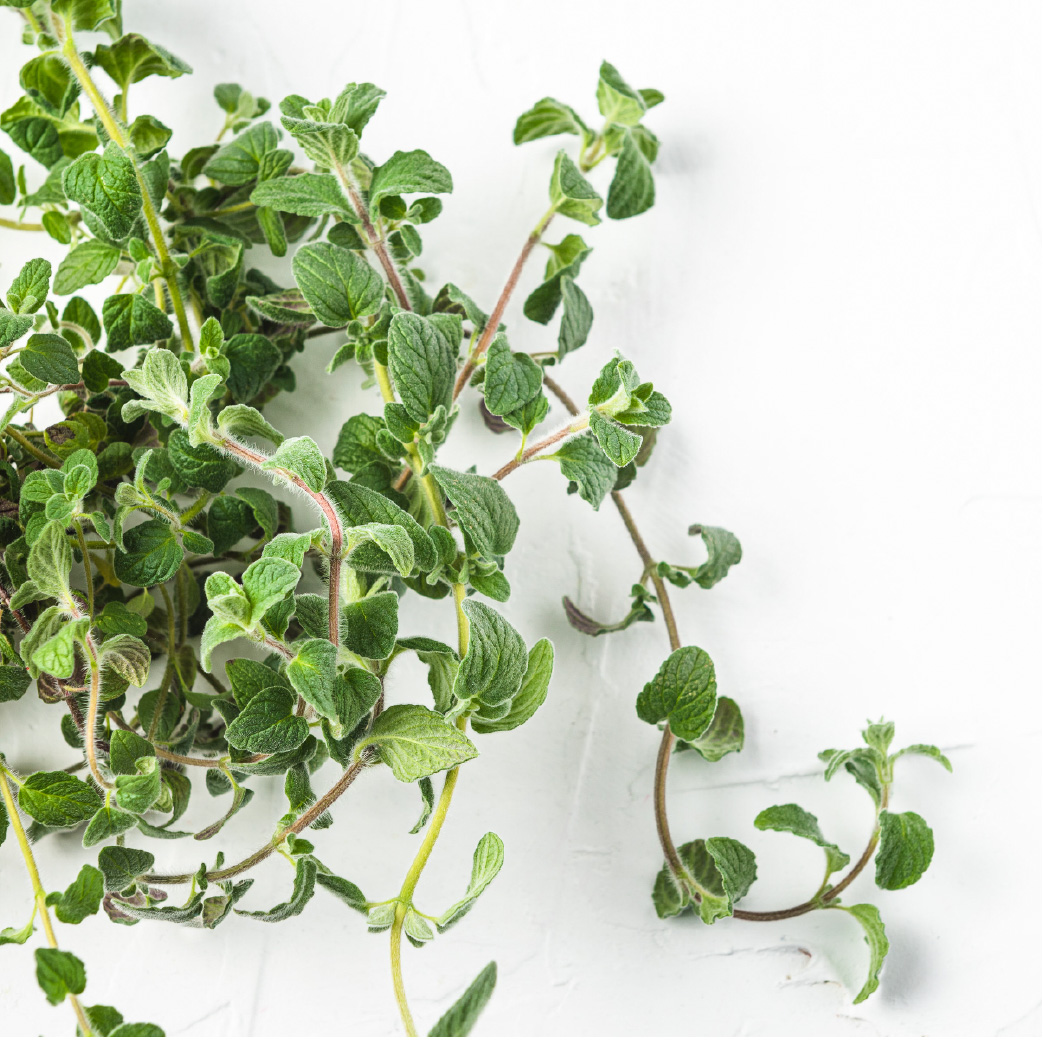Sweet Marjoram
Latin name: Origanum syriacum
🌱 Days to Sprout: 7-14
😋 Ready for Full Dose of plant food with true leaves or roots .5-inch long
✂️ Thin to: 3 plants per yCube
🍅 Days to Maturity: 65-75
💡 Light Zone: Medium
📏 Plant Size: <1 ft
💚 Care Level: Beginner
Origin
Sweet Marjoram is native to the Middle East and often called Syrian Oregano, as its Latin name indicates. Also known as zaatar, it is not to be confused with za’atar, which is instead an herbal blend. Some believe Sweet Marjoram is the hyssop referred to in the Old Testament of the Bible, and thus is also often referred to as Bible hyssop.
Qualities
Sweet Marjoram looks similar to oregano with small, fuzzy, green leaves. It’s commonly touted to be a strong neuroprotectant, antioxidant, anti-inflammatory, and antispasmodic.
Use
Use dried or fresh Sweet Marjoram leaves as you would oregano. Its flavor is complex and a combination of oregano and thyme. Add to sauces or dressings for flavor complexity, soups or stocks to increase savoriness, or as a garnish for an herbal zing.
Care & Harvest
💡Temperature: Prefers mild temperatures (60-70°F).
✂️ Pruning: Remove leaves with brown spots if they appear. Check the roots monthly and trim any that are brown or extending past the yPod. Snip flowers as they appear to extend the plant’s life.
🌿 Harvest:Harvesting frequently helps prolong the plant's life. Pinch off individual leaves, or use clean shears to cut stems above growth nodes. Only harvest stems when they reach at least 4-6 inches tall, and leave 1/3 of the plant behind to ensure continuous growth.
Harvest to Plate Recipe
Salatet Zaatar Akhdar (Lebanese Wild Oregano Salad)
Recipe: Hadia's Lebanese Cuisine
Ingredients
4 bunches of Sweet Marjoram (~14 oz. weighed with their stems, equivalent to 4 cups de-stemmed)
1 large onion, finely chopped
1 ½ teaspoons sumac
¼ cup freshly squeezed lemon juice
1/3 cup extra virgin olive oil
Salt to taste
Directions
De-stem the Sweet Marjoram leaves, then wash repeatedly while grabbing the leaves between your palms and squeezing a bit to rid the leaves of excess liquid. Transfer to a bowl.
Add the chopped onion, sumac, lemon juice and olive oil to the bowl.
Adjust salt to taste preference.
Serve with pita bread or with whatever your heart desires!
Our Plant Health & Nutrition Team thoroughly tests each variety we offer to bring you the most flavorful and high-quality plants. We regularly rotate our plant portfolio, so please note, availability varies.

